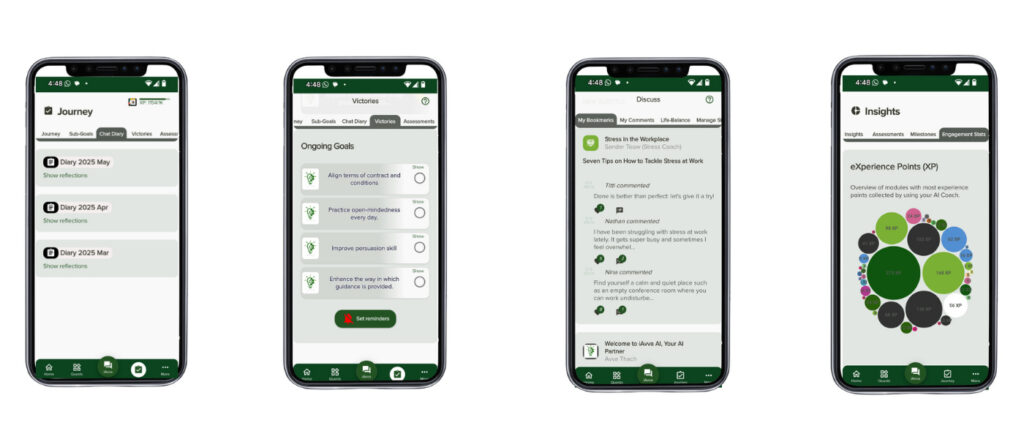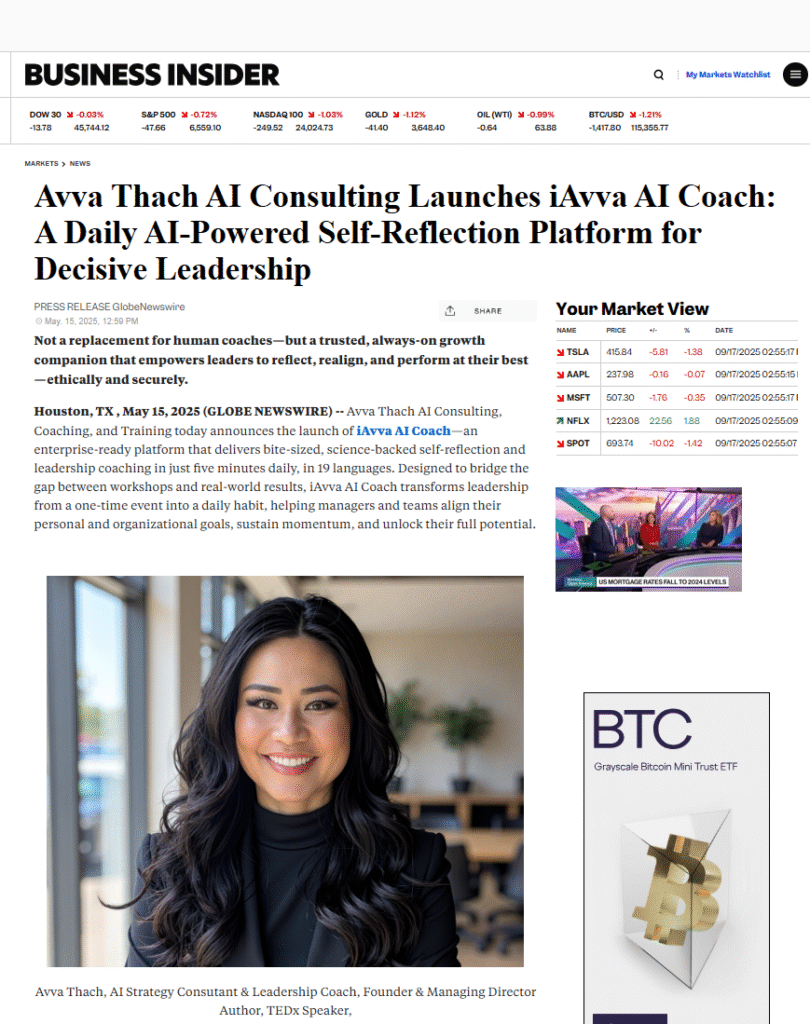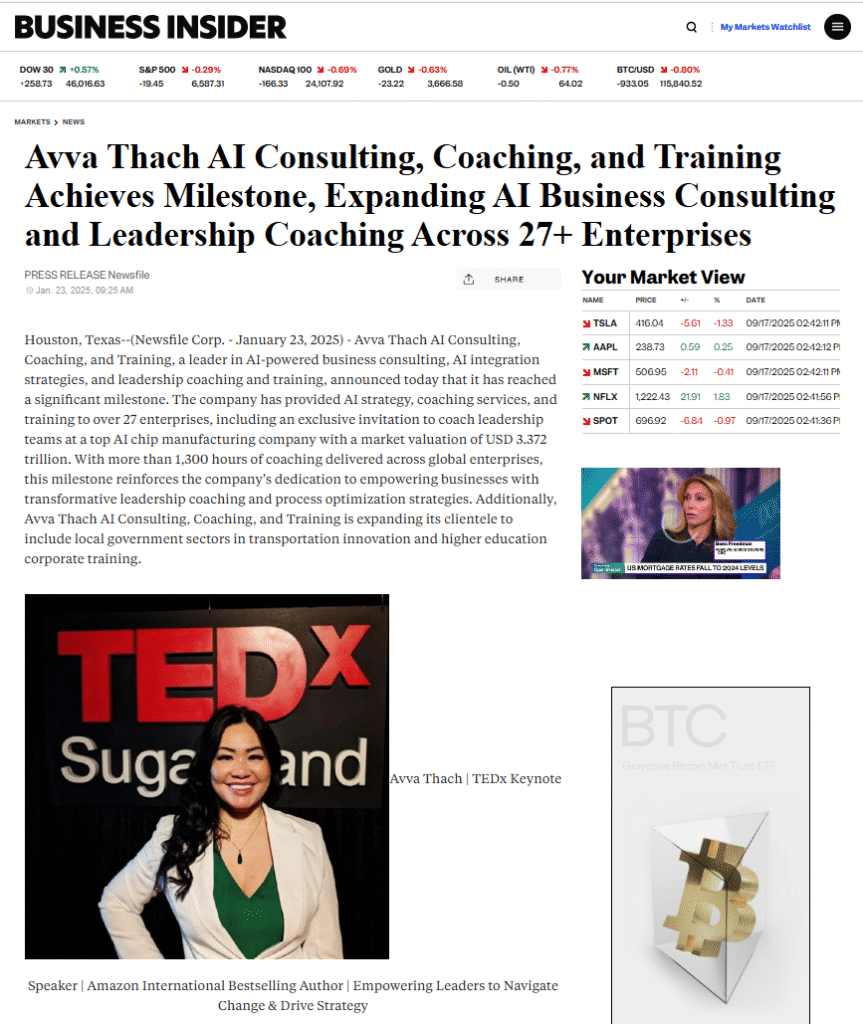Mastering Business Agility: Strategies for Thriving in Uncertain Times
Introduction
Welcome to the wild world of business agility, where adaptability is the name of the game and uncertainty is just another Tuesday. In a landscape that changes faster than a TikTok trend, organizations must embrace agile business practices to stay afloat. Think of it as a survival kit for the corporate jungle one that equips you with the tools to navigate through storms and seize opportunities as they arise.
According to recent studies, about 70% of organizations are either currently undergoing or planning to undergo an agile transformation. That’s right! Businesses are realizing that being nimble isn’t just a nice-to-have; it’s essential for survival in today’s market. But what does it mean to be an agile organization? Is it just about using fancy buzzwords like “iterative process improvement” and “cross-functional collaboration”? Not quite!
In this blog post, we will explore the multifaceted world of business agility from understanding its core principles to implementing strategies that drive results. We’ll dive into how organizational agility can help you not only survive but thrive amidst chaos. So grab your favorite beverage, settle in, and let’s embark on this journey together.

Understanding Business Agility
Welcome to the world of business agility, where change is not just a possibility, but an expectation! In this dynamic landscape, organizations must be more than just reactive; they need to be proactive, adaptable, and ready to pivot at a moment’s notice. So, what exactly is business agility?
Definition of Business Agility
Business agility refers to an organization’s ability to rapidly adapt and respond to market changes, customer demands, and unforeseen challenges. It’s about creating a culture that embraces flexibility in business operations and encourages innovation at all levels. Think of it as the organizational equivalent of a well-trained gymnast nimble, quick on their feet, and capable of flipping into action when needed!
Importance of Agility in Today’s Market
In today’s fast-paced environment, the importance of agility cannot be overstated. With 93% of companies undergoing some form of digital transformation (International Data Corporation), organizations that lack agility risk falling behind their competitors. Here’s why business agility is crucial:
- Enhanced Responsiveness: Companies can react swiftly to changes in consumer behavior or market conditions.
- Improved Innovation: Agile organizations foster a culture where new ideas are continually generated and tested.
- Competitive Advantage: Businesses that can pivot quickly often outperform their more rigid counterparts.
- Customer-Centric Approaches: Agile businesses prioritize customer feedback, leading to products and services that truly resonate with users.
Key Components of Business Agility Framework
A robust business agility framework consists of several key components that work together harmoniously:
- Nimble Business Strategies: Developing strategies that allow for quick adjustments based on real-time data.
- Cultural Adaptability: Fostering an agile corporate culture where experimentation is encouraged.
- Cross-Functional Collaboration: Breaking down silos within organizations to enhance teamwork and communication.
- Continuous Improvement: Implementing lean and agile principles for ongoing process optimization.
- Agile Leadership: Leaders who inspire teams to embrace change and drive agile transformation across the organization.

Takeaway: Embracing business agility isn’t just about adopting new practices; it’s about reshaping your entire organizational mindset. The future belongs to those who can adapt swiftly!
The Role of Agile Practices in Organizational Success
In the quest for business agility, organizations are increasingly turning to agile practices as their secret sauce for success. Think of agile practices as the Swiss Army knife for businesses, versatile and effective in tackling various challenges that come their way.
Agile Business Practices Overview
Agile business practices focus on flexibility, collaboration, and customer-centricity. They allow organizations to pivot quickly in response to market changes or customer feedback. This means less time stuck in the mud of bureaucracy and more time zooming toward innovation!
Benefits of Agile Transformation for Organizations
- Enhanced Flexibility: Agile transformation fosters a culture where teams can adapt their strategies without losing momentum.
- Improved Decision-Making: With real-time data at their fingertips, businesses can make informed decisions that align with their goals.
- Boosted Employee Morale: When team members feel empowered to contribute ideas, engagement and satisfaction soar.
- Faster Time to Market: Agile methodologies support speed to market strategies, allowing businesses to launch products faster than ever.
Did you know? According to a study by the Project Management Institute, organizations that embrace agile practices are 1.5 times more likely to succeed in meeting project goals compared to those that do not!
Case Studies of Successful Agile Implementations
The proof is in the pudding! Here are a couple of shining examples:
- Spotify: By implementing agile squads and tribes, Spotify has achieved remarkable responsiveness to user needs while maintaining a strong corporate culture focused on innovation.
- Zara: The fashion retailer has mastered agility by using real-time customer feedback to inform design decisions, reducing lead times dramatically and keeping its inventory fresh.
The takeaway? Adopting agile practices isn’t just about following a trend; it’s about embedding flexibility into your organizational DNA. As you embark on your own journey toward an agile business model, remember: it’s not merely about speed but also about creating an environment where creativity thrives and innovation flourishes.

Cultivating an Agile Corporate Culture
Creating an agile corporate culture is like planting a garden: it requires the right environment, nurturing, and a little bit of patience. When you cultivate a culture that embraces business agility, you’re not just preparing for change; you’re inviting it to dance!
Characteristics of an Agile Organization Structure
An agile organization structure is designed to be flexible and responsive. Here are some key characteristics:
- Flat Hierarchies: Fewer layers mean faster decision-making.
- Cross-Functional Teams: Diverse skill sets working together boost creativity and innovation.
- Decentralized Decision-Making: Empowering teams to make decisions enhances speed and adaptability.
- Customer-Centric Focus: Always keeping the customer in mind ensures relevance in strategies.
Fostering a Culture of Continuous Improvement and Innovation
A culture that thrives on continuous improvement is like a well-oiled machine always refining its processes. Here’s how to foster this environment:
- Encourage Experimentation: Allow teams to test new ideas without fear of failure.
- Create Feedback Loops: Regular check-ins and retrospectives help identify areas for improvement.
- Promote Learning Opportunities: Invest in training programs that enhance skills related to agile management.
- Acknowledge Contributions: Recognizing team efforts fosters motivation and engagement.
Strategies for Encouraging Cross-Functional Collaboration
If collaboration were a superhero, it would wear a cape made of diverse perspectives! Here are some strategies to encourage it:
- Create Collaborative Spaces: Design workspaces that promote interaction among different teams.
- Implement Agile Ceremonies: Daily stand-ups, sprint planning, and retrospectives can break down silos.
- Select Diverse Project Teams: Mix talents from different departments to tackle projects together.
- Cultivate Trust and Openness: Foster an environment where team members feel safe sharing ideas without judgment.

Nimble Business Strategies for Rapid Adaptation
In a world where the only constant is change, business agility is no longer just a buzzword it’s a necessity. Companies that can pivot quickly not only survive but thrive in uncertain times. So, how do we craft nimble business strategies that foster rapid adaptation? Let’s dive into some actionable insights!
-
Developing Speed to Market Strategies for Businesses
Speed to market is the name of the game. Companies like Amazon have mastered this by utilizing agile methodologies that allow them to launch products faster than their competitors. To develop your own speed to market strategies:
- Implement iterative development cycles think of it like cooking: taste and adjust as you go!
- Utilize cross-functional teams to break down silos and enhance collaboration.
- Leverage real-time data analytics for quick decision-making because who needs crystal balls when you have data?
-
Responsive Supply Chain Management Techniques
A responsive supply chain is essential for agility in business strategy. This involves:
- Embracing technology for real-time tracking and transparency no more guessing games!
- Building strong relationships with suppliers to ensure flexibility in operations.
- Adopting lean principles to minimize waste and improve efficiency.
-
Real-Time Data-Driven Decision Making Processes
The ability to make quick, informed decisions can set you apart from the competition. Here’s how:
- Invest in data analytics tools that provide actionable insights at your fingertips.
- Create a culture of experimentation where teams can test ideas without fear of failure.
- Encourage feedback loops within your organization, ensuring everyone has a voice in the decision-making process.
The key takeaway? Embrace change with open arms! By focusing on agility in business strategy, you’ll ensure that your organization not only survives but flourishes amidst uncertainty. Ready to adapt? Let’s get started!
The Impact of Leadership on Business Agility
Leadership is not just about making decisions; it’s about crafting a culture that embraces business agility. In today’s fast-paced environment, leaders must be the catalysts for change, steering their organizations through the choppy waters of uncertainty.
Consider this: a company with strong leadership can pivot faster than a cat on a hot tin roof. Agile leaders understand that their role is to foster an environment where agile business practices thrive. They champion organizational agility, ensuring that teams can respond swiftly to market changes and customer needs.
The Importance of Agile Leadership in Transformation Efforts
Agile leadership is essential for successful agile transformation. Leaders who prioritize flexibility encourage teams to experiment, innovate, and iterate. This approach not only enhances business adaptability but also cultivates a sense of ownership among employees.
- Empowerment: Agile leaders empower their teams by delegating decision-making authority, fostering an environment where everyone feels responsible for outcomes.
- Vision: They communicate a clear vision that aligns with the organization’s goals, creating a roadmap that guides agile processes.
- Feedback Loops: By implementing continuous feedback loops, they ensure that everyone learns from successes and failures alike, driving ongoing improvement in business practices.
Nurturing Resilience in Business Processes through Leadership Styles
The right leadership style can significantly impact an organization’s resilience. Leaders who adopt a participative style encourage collaboration and cross-functional teamwork, which are crucial for maintaining agility in business strategy. They recognize that resilience stems from the ability to adapt quickly without losing sight of long-term goals.
Key Takeaway: Leaders should cultivate resilience by promoting a culture of trust and open communication. This helps teams feel secure in taking calculated risks essential for innovation!
A critical aspect of effective leadership is ensuring that organizational goals align seamlessly with agile processes. When leaders establish clear objectives and metrics tied to agility, they create a framework within which teams can operate efficiently.
- Cascading Objectives: Utilize frameworks like OKRs (Objectives and Key Results) to ensure alignment at all levels.
- Regular Check-Ins: Schedule frequent check-ins to assess progress towards goals and make necessary adjustments swiftly.
- Cultural Alignment: Foster an agile corporate culture where every employee understands how their work contributes to the broader organizational objectives.
The bottom line? Effective leadership is the backbone of any successful agile organization. By embodying principles of agility themselves, leaders can inspire their teams to embrace change and drive innovation ultimately leading to enhanced performance and competitive advantage in today’s market.
Implementing Agile Management Techniques for Growth
In the fast-paced world of business, where change is the only constant, business agility emerges as a crucial lifeline. Implementing agile management techniques can transform your organization into a nimble powerhouse, capable of adapting and thriving amidst uncertainty. Let’s dive into how you can harness these techniques for sustainable growth.
Lean and Agile Principles for Operational Efficiency
At the core of agile management lies the synergy between lean principles and agile methodologies. Think of it as a dynamic duo that streamlines operations while maximizing value. Here’s how you can implement these principles:
- Value Stream Mapping: Identify and eliminate waste in your processes to enhance efficiency.
- Empowered Teams: Foster a culture where teams have autonomy to make decisions, driving faster outcomes.
- Continuous Feedback Loops: Regularly collect feedback from stakeholders to refine processes and products in real-time.
Iterative Process Improvement Approaches for Companies
The beauty of agile lies in its iterative nature. Instead of waiting for a final product, embrace an approach where you continuously refine your offerings. This means:
- Sprints: Break down projects into manageable sprints that allow for regular assessments and adjustments.
- MVP Development: Focus on creating a Minimum Viable Product first; this lets you test ideas quickly without heavy investment.
- A/B Testing: Experiment with different versions of products or services to determine what resonates best with customers.
Create Scalable Business Solutions with an Agility Focus
Your goal should be to develop solutions that not only meet current demands but are also scalable for future growth. Consider these strategies:
- Cloud-Based Solutions: Leverage technology that allows flexibility and scalability without significant upfront costs.
- Cross-Functional Teams: Encourage collaboration across departments to foster innovation and responsiveness.
- Data-Driven Decisions: Utilize analytics to make informed choices that align with market trends and customer needs.
Key Takeaway: Implementing agile management techniques not only enhances operational efficiency but also fosters an environment ripe for innovation and responsiveness qualities essential for achieving true business agility.
The journey towards business agility may seem daunting, but by embedding these agile management techniques within your organization, you’re setting the stage for growth that is not just reactive but proactive. So roll up those sleeves, embrace the iterative process, and watch your organization flourish!
The Future of Business Agility: Trends and Predictions
- <
li>Navigating Digital Transformation and its Impact on Agility
li>< li>The Role of Technology in Enhancing Enterprise Agility
li>< li >Emerging Trends in Customer-Centric Agility Approaches
li> ul> section>
h2 > section >
Mastering Business Agility: Strategies for Thriving in Uncertain Times
” }, { “@type”: “FAQPage”, “@id”: “#faq”, “@graph”:[ { “@type”:”Question”, “name”:”What is business agility?”, “acceptedAnswer”:{ “@type”:”Answer”, “text”:”Business agility refers to an organization’s ability to rapidly adapt and respond to market changes, customer demands, and unforeseen challenges.” } }, { “@type”:”Question”, “name”:”Why is agility important in today’s market?”, “acceptedAnswer”:{ “@type”:”Answer”, “text”:”In today’s fast-paced environment, the importance of agility cannot be overstated. Agile organizations can react swiftly to changes, foster innovation, gain competitive advantage, and prioritize customer feedback.” } }, { “@type”:”Question”, “name”:”How can agile practices benefit organizations?”, “acceptedAnswer”:{ “@type”:”Answer”, “text”:”Agile practices enhance flexibility, improve decision-making, boost employee morale, and support faster time to market.” } } ] }, { “@type”: [“SpeakableSpecification”], “@id” : “#speakable1”, “cssSelector”:[“h1″,”h2”] } ] }





















Leave a Reply